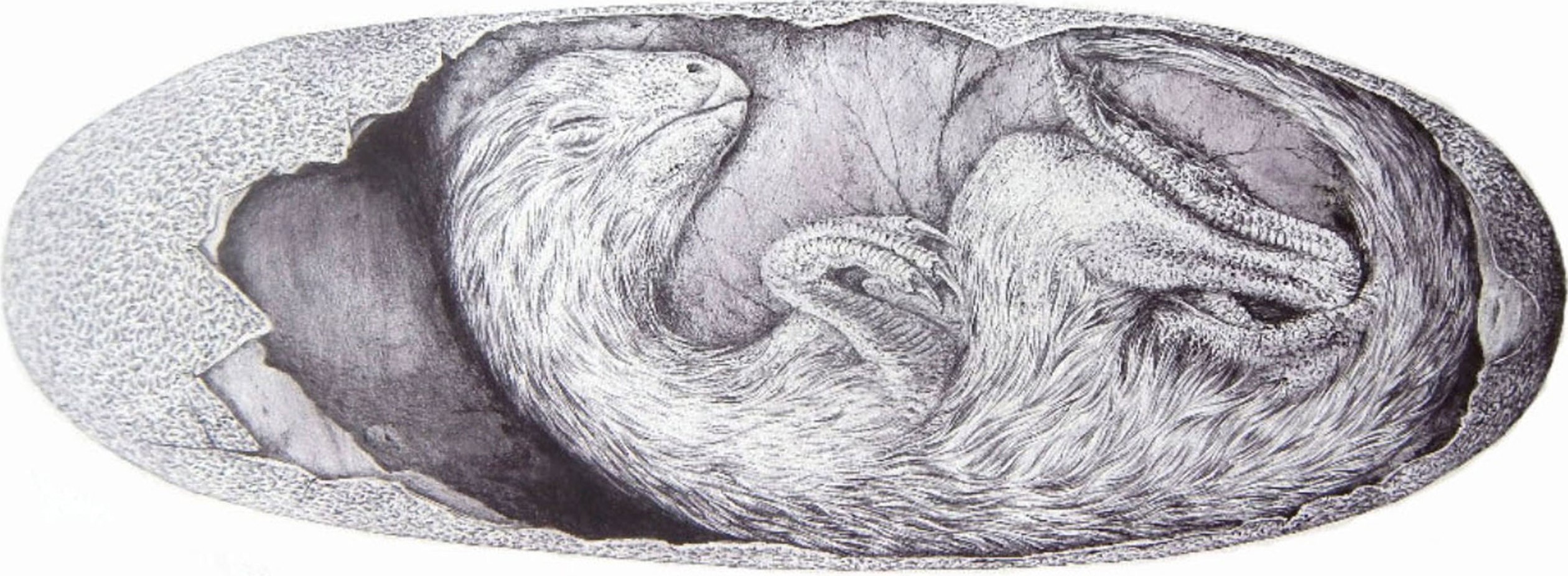
The drawing shows the approximate size of the Beibeilong embryo inside a Macroelongatoolithus egg (drawn by Vladimir Rimbala). Image courtesy Nature Communications
A discovery nearly 25 years in the making, paleontologists have published their scientific findings on the largest dinosaur eggs ever discovered. Measuring roughly half-a-metre in length each, the eggs were collected by a farmer in China roughly 30 years ago.
Philip Currie, one of the world's pre-eminent paleontologists and professor and Canada Research Chair in Dinosaur Paleobiology at the University of Alberta, has been working on the discovery since 1993. In 2015, the same farmer took Currie back to the site of discovery to confirm the location of the find.
"You need exactly the right conditions. If there's even a little bit of acidity in the soil, the eggs will just dissolve." - Philip Currie
"It was the most astounding thing. The whole area had been ripped up by enormous equipment terracing the mountainsides to plant walnut trees. The one slope remaining was where these giant eggs came from, and we found shells from the same specimen three decades later," says Currie.
Currie explains that the preservation of dinosaur eggs is extremely rare. "You need exactly the right conditions. If there's even a little bit of acidity in the soil, the eggs will just dissolve. Add that to the fact that eggs are delectable little meals for scavengers, and there are a lot of reasons why finding dinosaur eggs and embryos is extremely rare."
Enigmatic embryo
"We thought they were tyrannosaur eggs in the beginning. It was the only thing that made sense. But when we saw the embryo, it screwed everything up. This animal is related to caenagnathids or oviraptorosaurs from Alberta," said Currie.
He came to that conclusion because there were enough characters in the skull of the embryo to prove it.
The bones in this animal indicate that a full-sized adult would have weighed two metric tonnes. Although they are the largest dinosaur eggs ever found, the giant eggs are relatively small in comparison to the final animal size.
Mistaken dinosaur identity
The notoriously elusive oviraptorosaurs suffered a case of mistaken identity until recently. Often discovered near nests with a jaw structure adapted for eating eggs, their name translates to "egg thief." However, the eggs were in fact their own, as the animals were protecting their offspring from other predators.
Though this find was only a partial nest, including between six and nine eggs, Currie explains that a normal oviraptorosaur nest would contain roughly 30 or 40 eggs three metres across, with the mother protectively positioned in the middle of the donut-like shape to protect her growing flock.
"She would have been able to stretch her arms out protectively over the eggs. This might have been the reason these animals developed the long feathers behind their arms to ensure the eggs were covered."
For this most recent discovery, Currie worked with an international team of paleontologists on the recent finding, including Hanyong Pu from the Henan Geological Museum and his former student Darla Zelenitsky from the University of Calgary. The eggs and embryo are now on exhibit at the Henan Geological Museum.
"Perinate and eggs of a giant caenagnathid dinosaur from the Late Cretaceous of Central China" was published today in the open-access journal Nature Communications. http://dx.doi.org/10.1038/NCOMMS14952.